-
-
Services
Reservation Services
VIP Services
-
Business Travel
-
About Iran
History of Yazd
Yazd, located in central Iran, is one of the oldest cities in the country, renowned for its unique desert architecture and historical significance. Known as the “City of Windcatchers,” Yazd has been an important center of Zoroastrian culture and Persian civilization for centuries. Its narrow alleys, adobe buildings, and traditional houses reflect the ingenuity of adapting urban life to the desert environment.
Cultural and Historical Attractions
Yazd is home to numerous historical landmarks, including the Jameh Mosque of Yazd, Amir Chakhmaq Complex, and Towers of Silence (Dakhma). The city also hosts Zoroastrian temples and the Fire Temple of Yazd, showcasing its religious and cultural diversity. Visitors can explore ancient bazaars, traditional bathhouses, and beautiful Persian gardens that highlight the city’s artistic heritage.
Natural Surroundings and Tourism
The province surrounding Yazd features unique desert landscapes, including sand dunes, salt plains, and historic qanats (underground water channels). Visitors can enjoy desert tours, traditional handicrafts, and local cuisine while experiencing the city’s rich history and architectural beauty. Yazd offers a fascinating blend of cultural heritage, desert landscapes, and historical architecture, making it a must-visit destination in Iran.

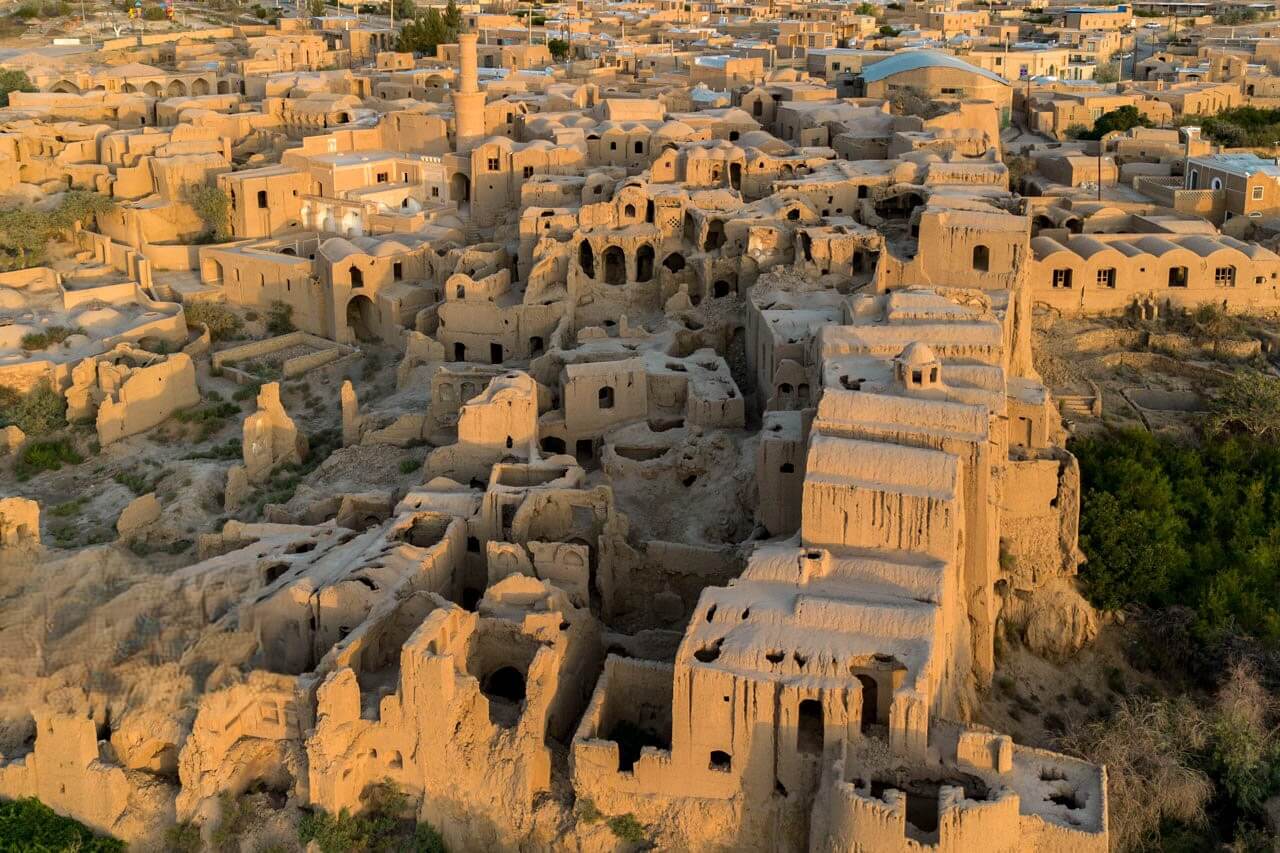

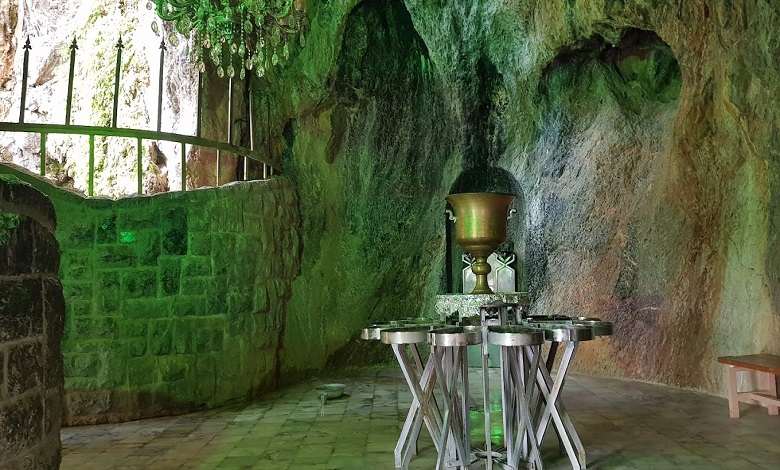
Chak Chak, located near Meybod in Yazd Province, is one of the most important Zoroastrian pilgrimage sites in Iran. The site features a sacred shrine built into a cliff, where water continuously drips from the rocks, symbolizing purity and divine presence. Pilgrims visit Chak Chak to pay their respects, participate in religious rituals, and experience the serene and spiritual atmosphere of this unique location, which holds great cultural and historical significance for the Zoroastrian community.

Kharanaq Village, located near Yazd, is an ancient desert village known for its traditional adobe architecture, narrow alleys, and historic citadel. The village, which has been inhabited for over a thousand years, offers visitors a glimpse into rural life in the desert and the ingenuity of adapting buildings to arid climates. Travelers can explore the old houses, watchtowers, and local handicrafts, experiencing both the history and cultural heritage of this unique desert settlement.

Yazd Fire Temple, located in the heart of Yazd, is one of the most important Zoroastrian religious sites in Iran. The temple houses a sacred fire that has reportedly been burning for over 1,500 years, symbolizing purity and eternal light in Zoroastrianism. Visitors can explore the beautiful temple complex, admire its intricate architecture and stained-glass decorations, and learn about Zoroastrian beliefs, rituals, and cultural heritage in the city of Yazd.
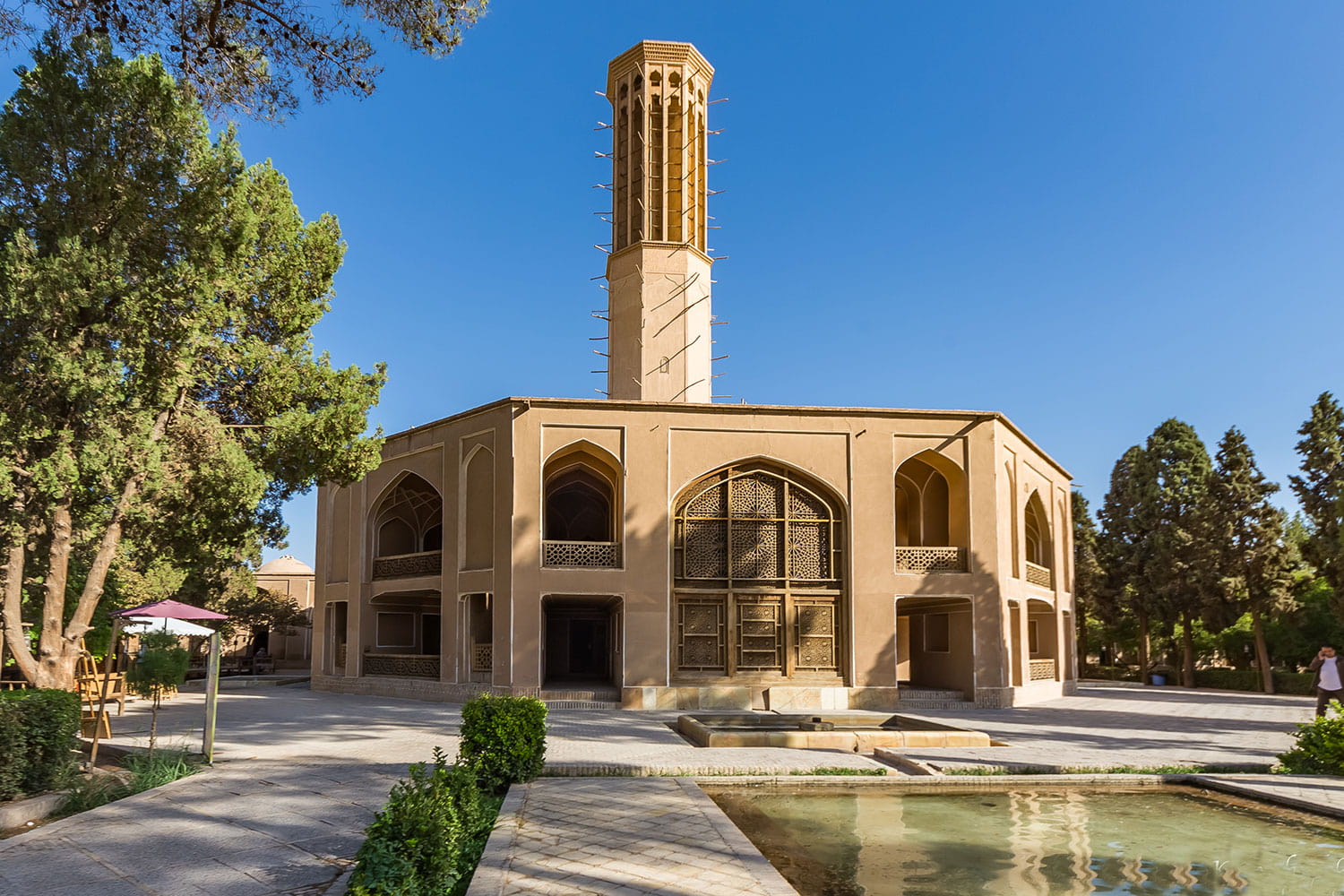
Dolat Abad Garden, located in Yazd, is a historic Persian garden famous for its beautiful landscaping, traditional windcatcher (badgir), and elegant mansion. Built during the 18th century, the garden showcases the ingenuity of Persian architecture in adapting to desert climates. Visitors can stroll through the lush gardens, admire the tall windcatcher, and explore the historic mansion, enjoying both the aesthetic beauty and cultural heritage of this iconic site.
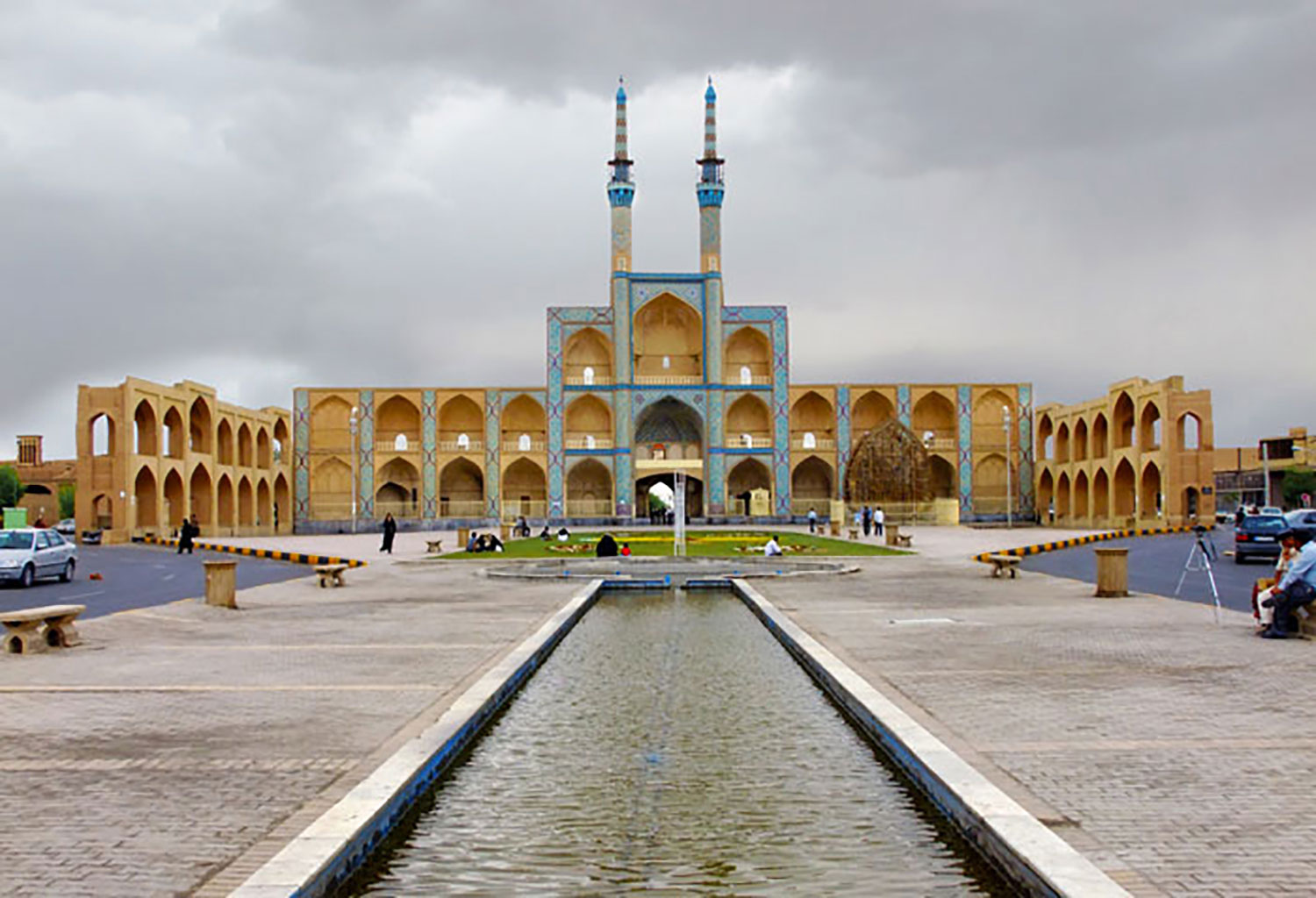
Amir Chakhmaq Square, located in the heart of Yazd, is a historic city square known for its striking symmetrical façade, traditional Persian architecture, and cultural significance. The square features a mosque, a caravanserai, a bathhouse, and a tekyeh (religious building), making it a central hub for social and religious gatherings. Visitors can admire the beautifully illuminated structure at night, explore nearby bazaars, and experience the vibrant atmosphere that reflects the city’s rich heritage.
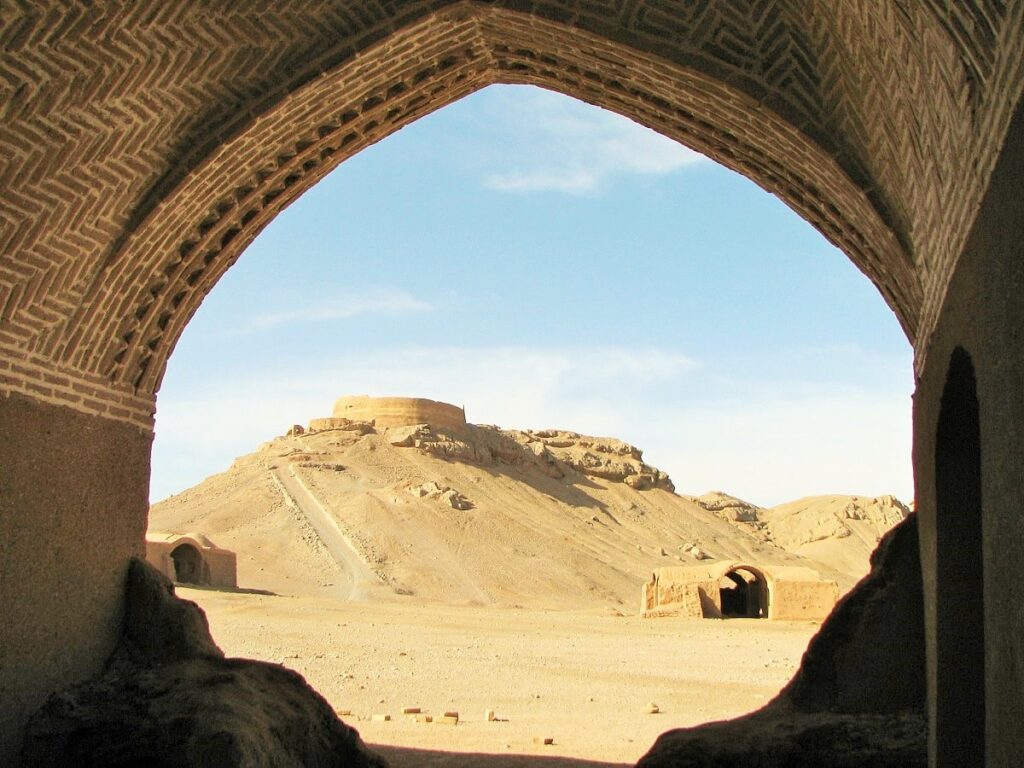
Towers of Silence (Dakhmeh), located near Yazd, are traditional Zoroastrian burial sites where the deceased were placed to be exposed to the sun and scavenging birds, following ancient religious practices. These circular, elevated structures reflect Zoroastrian beliefs about purity and the sacredness of the earth. Visitors can explore the site, learn about the historical and religious significance of this unique funerary tradition, and gain insight into the cultural heritage of the Zoroastrian community in Yazd.
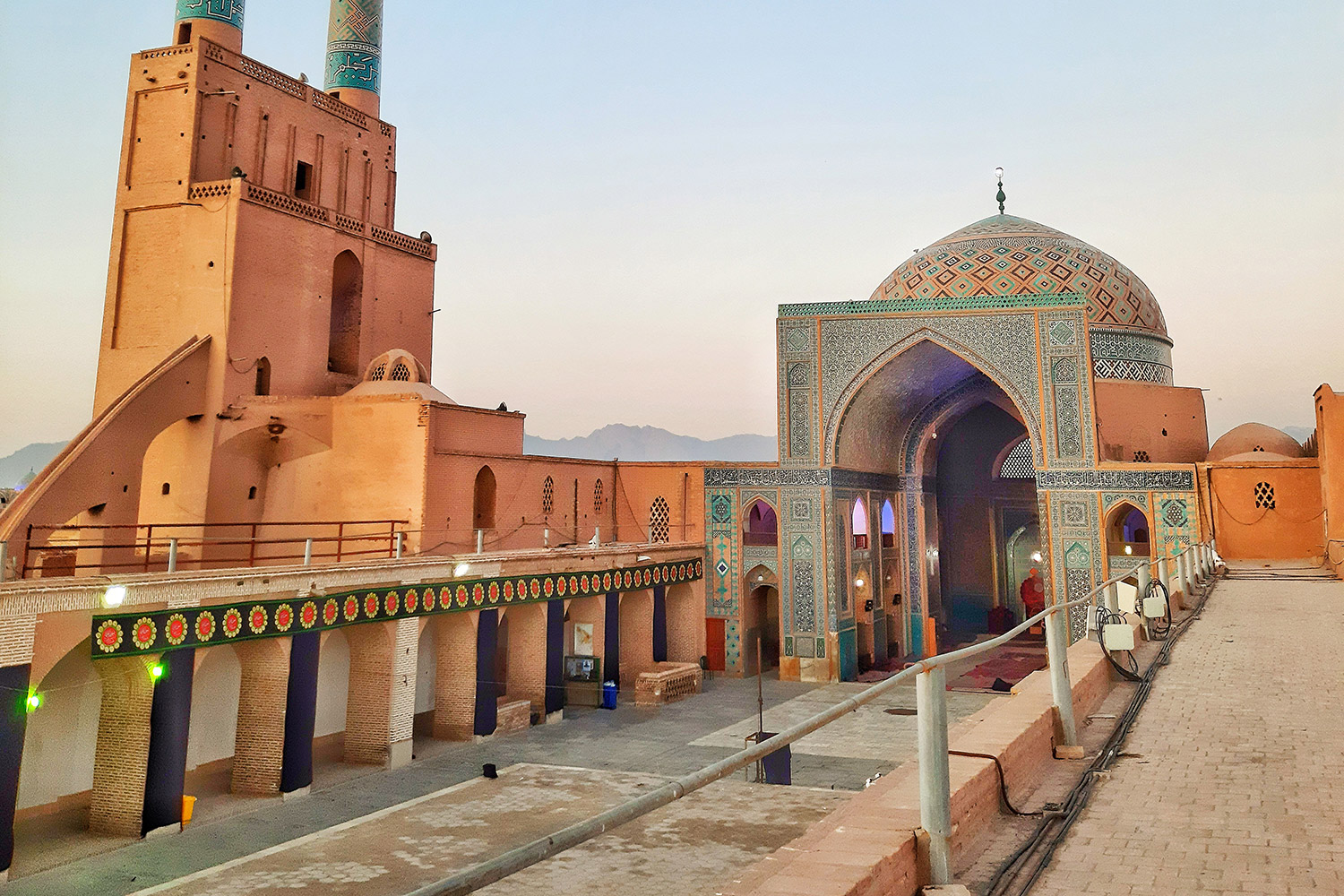
Fahadan Neighborhood, Jameh Mosque, and Alexander’s Prison (Zendan-e Eskandar) are among the historic sites in the heart of Yazd. Fahadan is one of the oldest neighborhoods, featuring traditional adobe houses and narrow winding alleys that showcase desert architecture. The Jameh Mosque of Yazd is renowned for its tall minarets, intricate tile work, and beautiful courtyard, representing the city’s Islamic heritage. Nearby, Alexander’s Prison, a historic site with ancient brick structures, adds to the rich historical and cultural landscape, making this area a must-visit for exploring Yazd’s heritage.

Zurkhaneh of Yazd is a traditional Iranian gymnasium where practitioners engage in Varzesh-e Pahlavani, a combination of martial arts, strength training, and spiritual rituals. The sport, which has roots in ancient Persia, emphasizes physical fitness, courage, and moral values. Visitors to the Zurkhaneh can observe the unique exercises, rhythmic drumbeats, and ceremonial traditions, gaining insight into an important aspect of Iranian culture and heritage.
+989301903026
+982166126539
Info@Rosha.Travel
Saturday - Thursday 09 Am – 05 Pm
Iran, Tehran, End of Keshavarz Blvd, Corner of Ghajar Alley, North Jamalzadeh St, No. 528, Unit 4, 2nd Floor